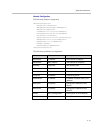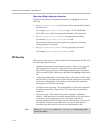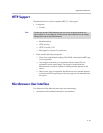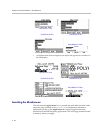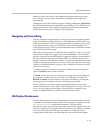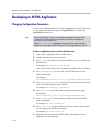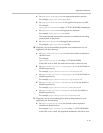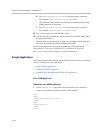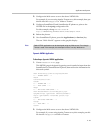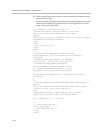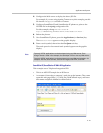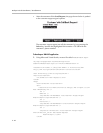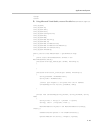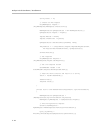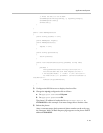
Application Development
2 - 39
2. Configure the Web server to serve the above XHTML file.
For example, if you are using Apache Tomcat to try this example, then put
this file into the
webapps\PLCM
folder of Tomcat.
3. Configure SoundPoint IP and SoundStation IP phones to point to the
XHTML file in the sip.cfg configuration file.
For this example, change
mb.main.home
to
http://<WEBSERVER_ADDRESS:PORT>/PLCM/Sample.xhtml
.
4. Reboot the phones.
5. On a SoundPoint IP phone, press the Applications (or Services) key.
The text “Hello World!” appears on the graphic display.
Dynamic XHTML Application
To develop a dynamic XHTML application:
1. Create a
AddStock.xhtml
page.
This XHTML page is designed for getting a stock symbol as input from the
SoundPoint IP or SoundStation IP phone, then retrieve the information for
this stock symbol.
<html xmlns="http://www.w3.org/1999/xhtml">
<!- - HEADER START - ->
<head>
<title>Stocks</title>
</head>
<!- - HEADER END - ->
<!- - BODY START - ->
<body>
<!- - ADD STOCK FORM START - ->
<form method="POST" action="GetQuote.jsp">
<p>Symbol<input type="text" name="stockname"/>
<input type="submit" value="Get Quote"/></p>
</form>
<!- - ADD STOCK FORM END - ->
</body>
<!- - BODY END - ->
</html>
2. Configure the Web server to serve the above XHTML file.
For example, if you are using Apache Tomcat to try this example, put this
file into the
webapps\PLCM
folder of Tomcat.
Note
Static XHTML applications can be developed using any Web server. Even though
Tomcat is used in the example, the developer is free to use any Web server.



